High Speed Rail in the Iberian Peninsula
Posted: 14 April 2016 | | 1 comment
In a blog for Global Railway Review, Graham Ellis looks at the varying growth of high speed rail services in Spain and Portugal.
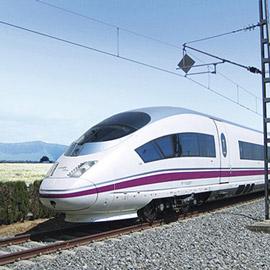

In a blog for Global Railway Review, Graham Ellis looks at the varying growth of high speed rail services in Spain and Portugal.
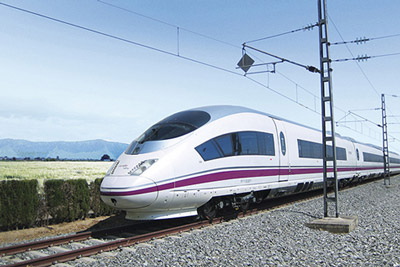

AVS 103 train set
For this irregular blog I am looking at the Iberian Peninsula and the growth of the high speed services in that region. The region is split into two separate countries Spain and Portugal, both of which utilise a non-standard rail gauge, which historically came about due to fears of invasion from France in Napoleonic times, this has held both countries back as there is a need to have gauge changing bogies at the respective borders and so long delays occurred at the borders to the rest of Europe.
Portuguese government announces approval of three high-speed rail lines in 2005
Things are however starting to change, in Spain the rail operator RENFE is adding more high speed lines to its network but in Portugal a different approach is being followed, I start by looking at Portugal and then moving back to Spain. In 2005 the Portuguese government announced the approval of three high-speed lines, the first was a 300Km/h line between Lisbon and Porto , the second was between Porto and Vigo allowing mixed traffic at up to 250Km/h and the third was a 350Km/h line between Lisbon and Madrid and onwards into the wider European network.
“Not financially viable”
In December 2009 the contract for the first section of line covering approximately 150Km was let on a 40-yearbuild, finance and maintain basis but, by March 2012 this contract had been cancelled and in a 2015 Portugese court of auditors found that the total bill of €11.6 billion for the overall works would have produced a rail network that was “not financially viable”. This set of findings has effectively killed any high speed rail developments for the foreseeable future and what this will mean for the Portugese economic development, connectivity and sustainability is unclear at the moment.
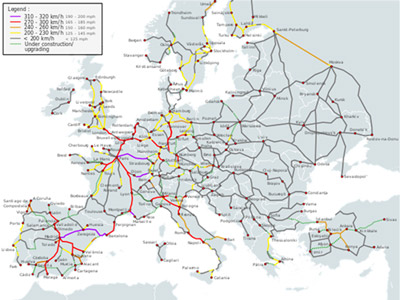

Europe’s high speed rail system, note Portugal’s system has been abandoned
A different picture in Spain
The picture in Spain is however totally different with high speed lines being built and completed at an ever increasing rate, the high speed system is known as AVE (Alta Velocidad Espana), which is also a play on word as “ave” is the Spanish for bird! The total track mileage in Spain is now over3,000 Km, with around 1,000Km having been added recently, the expansion of the system includes connecting Zamora, Leon, Palencia and Burgos to the existing system as well as finalising the missing east coast link between Barcelona and Valencia. On my last visit to Spain the track bed and track had been laid, the catenary poles had been installed and the overhead wires were being strung along this latter route, I have however been unable to confirm; with either the infrastructure manager or the train operator; when the line will be commissioned and opened to regular traffic.
Other links will see the southern cities of Seville fully connected to Cadiz, with a high speed route also reaching the famous city of Granada. Salamanca will also be added to the network but the trains will operate at speeds below the 300Km/hr maximum. The Galacian cities of Pontevedra and Vigo have new AVE stations and the western Spanish cities of Plasencia and Badajoz will link to the Ave system via the cities of Caceres and Merida (home of the Spanish paramilitary Guardia Civil police force training school).
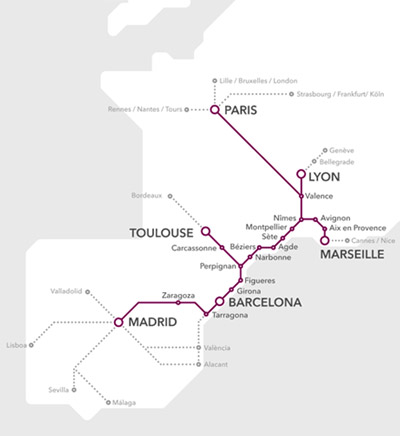

Spain’s High speed rail links to France and the wider European networks
Despite a high speed rail derailment at Santiago de Compostela in July 2013, where 140 were injured and 79 were killed, more people are travelling by rail rather than by air and spending on the rail network is greater than that on the highway network. Unlike the UK, travel in Spain on the medium to long distance services requires seats to be booked in advance, but with some availability on the day, and so a seat is always guaranteed. The rolling stock is also of a high quality than that mostly seen on the UK, seats are bigger, mobile phone/computer charge points are fitted on most trains along with on-board video players, a bit like the aircraft of a few years ago. In addition, fares are very competitive with airlines where direct competing routes exist and there are also different discounts available to travellers. I hold a RENFE gold card, that is available to everyone over the age of 60, and this gives me a discount of between 25% and 50% off standard fares!
Fares competitive with airlines
The rolling stock utilised on the Spanish high speed rail system consists of some of the fastest in Europe, the Siemens Velaro E/AVS 300 based on the German ICE 3 trainset with a rated speed of 350Km/Hr, Talgo 350, commonly called “El Pato” (the duck) as its long nose looks like a duck’s bill, with a rated speed of 350Km/Hr and the final one is the RENFE class 130/Talgo 250 with a rated speed of 250Km/Hr which is fitted with dual voltage capability along with the Talgo automatic variable gauge axles.


Talgo 350
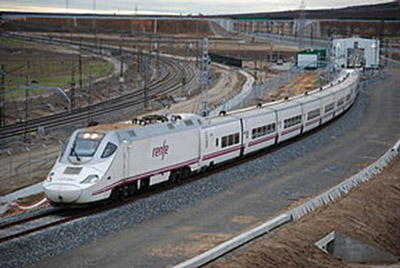

RENFE Class 130 / Talgo 250 with variable gauge axles
Resistance to high speed rail
There is not however universal support for the system across Spain as the high speed lines have in many cases been converted from standard rail routes and this has cut-off the regular standard train services isolating smaller towns and villages. This has meant that some locals have been unable to travel to/from their homes and work, shopping etc. In many cases there are no replacement bus services to allow alternate travel arrangement and so the resistance to high speed is higher in those areas where high speed is chosen to be introduced. This has not been the case on the new east coast link from Barcelona to Valencia as the high speed track between Tarragona and Benicarlo is a new dedicated permanent way and the connections at either end are dual tracked so slower trains have the ability to be diverted into passing places.
At the moment the investment in high speed rail connections made by the Spanish government and the European Union appears to be paying dividends. It will be interesting to compare the economic growth patterns in both Spain and Portugal over the coming few years.
“Investment in high speed rail connections made by the Spanish government and the European Union appears to be paying dividends. It will be interesting to compare the economic growth patterns in both Spain and Portugal”
At the moment the investment in high speed rail connections made by the Spanish government and the European Union appears to be paying dividends. It will be interesting to compare the economic growth patterns in both Spain and Portugal over the coming few years.










I would be interested by an appraisal of these investments.